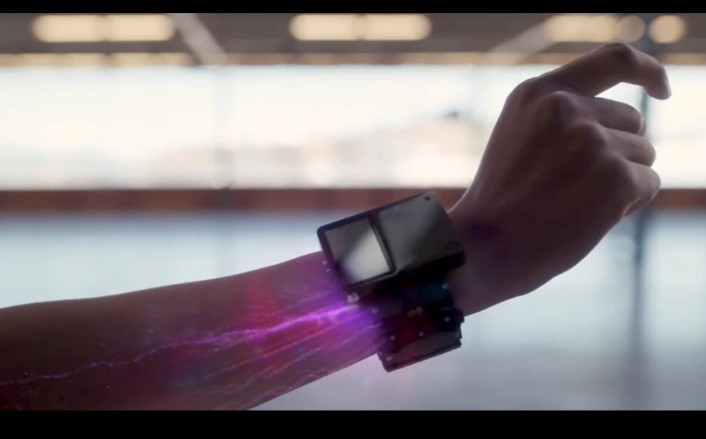Meta’s AR Wristband and the Evolution of Human-Computer Interaction
Thank you for reading this post, don't forget to subscribe!

Introduction:
Meta, formerly known as Facebook, is at the forefront of transforming the landscape of human-computer interaction with its cutting-edge AR wristband. This wristband, utilizing electromyography (EMG) technology, is poised to redefine how we engage with augmented reality (AR) and virtual reality (VR) environments. In this article, we explore Meta’s ambitious roadmap, featuring the AR wristband, AR glasses, and the broader vision for the metaverse.

The AR Wristband’s Neural Interface:
Meta’s AR wristband represents a significant leap in neural interface technology. By capturing electrical signals from the brain to the hand and fingers, the wristband enables users to control digital devices with remarkable precision, all with minimal physical movement. This breakthrough technology promises a more natural and intuitive way to interact with AR and VR, potentially rendering traditional input devices obsolete.
Integration with AR Glasses:
Meta’s commitment to innovation extends beyond the wristband. The company is set to release AR glasses, internally known as “Orion,” which project high-quality holograms onto the real world for an immersive AR experience. What makes this integration even more compelling is the seamless collaboration between the AR glasses and the neural interface wristband. Users will be able to control the glasses through hand movements, offering a glimpse into the future of hands-free, intuitive computing.
The Metaverse Vision:
Mark Zuckerberg, Meta’s CEO, envisions a metaverse—a collective virtual shared space that merges physical reality, AR, and the internet. The AR wristband and glasses play pivotal roles in realizing this vision. The wristband, designed to learn and adapt to users, aligns with Zuckerberg’s projection that it will surpass traditional keyboards by 2028, marking a paradigm shift in how we interact with technology.
Collaboration with Luxottica and Ray-Ban:
Meta’s collaboration with Luxottica under the iconic Ray-Ban brand adds another layer to its AR ventures. The smart glasses developed in partnership are set to release their third generation in 2025. This iteration will feature a display or “viewfinder” and integrate seamlessly with the neural interface wristband. Users can expect advanced functionalities such as QR code scanning, notifications display, and real-time text translation—all controlled through hand movements.
Timeline and Future Outlook:
Meta’s timeline for these innovations is ambitious yet promising. The AR glasses are scheduled for internal launch among employees as early as 2024, with a public release planned for 2027. The AR wristband, as teased by Zuckerberg, is expected to ship in the next few years, solidifying Meta’s commitment to incorporating neural interface technology into its product lineup.
Conclusion:
Meta’s venture into AR and VR technologies, marked by the development of the AR wristband, AR glasses, and its broader metaverse vision, reflects a bold stride toward revolutionizing human-computer interaction. As the company pushes the boundaries of innovation, the fusion of neural interfaces with augmented reality opens new possibilities, making these technologies more accessible and appealing to a wider audience. Meta’s vision extends beyond hardware, aiming to reshape how we experience and interact with the digital world, ushering in an era where the metaverse becomes an integral part of our everyday lives.

Somebody essentially help to make significantly articles Id state This is the first time I frequented your web page and up to now I surprised with the research you made to make this actual post incredible Fantastic job
kMOIAylrumTwtie